In 1920, astronomers Harlow Shapley and Heber Curtis came together to take part in the Great Debate about the scale of the Universe. But what ultimately, was astronomy's Great Debate about, and how did it change the way we look at the Universe?
Harlow Shapley, a 34-year-old journalist-turned-astronomer, must have been nervous when he climbed the stage in the Baird Auditorium of the Smithsonian Museum of Natural History in Washington, DC on 26 April 1920.Facing him was a crowd of fellow scientists and lay people alike.
On stage after Shapley would be his opponent in the Great Debate, eminent astronomer Heber Curtis – a man 13 years his senior, more experienced and eloquent at speaking, and who disagreed with Shapley on just about everything.
For more stories like this, visit our history of astronomy webpage.
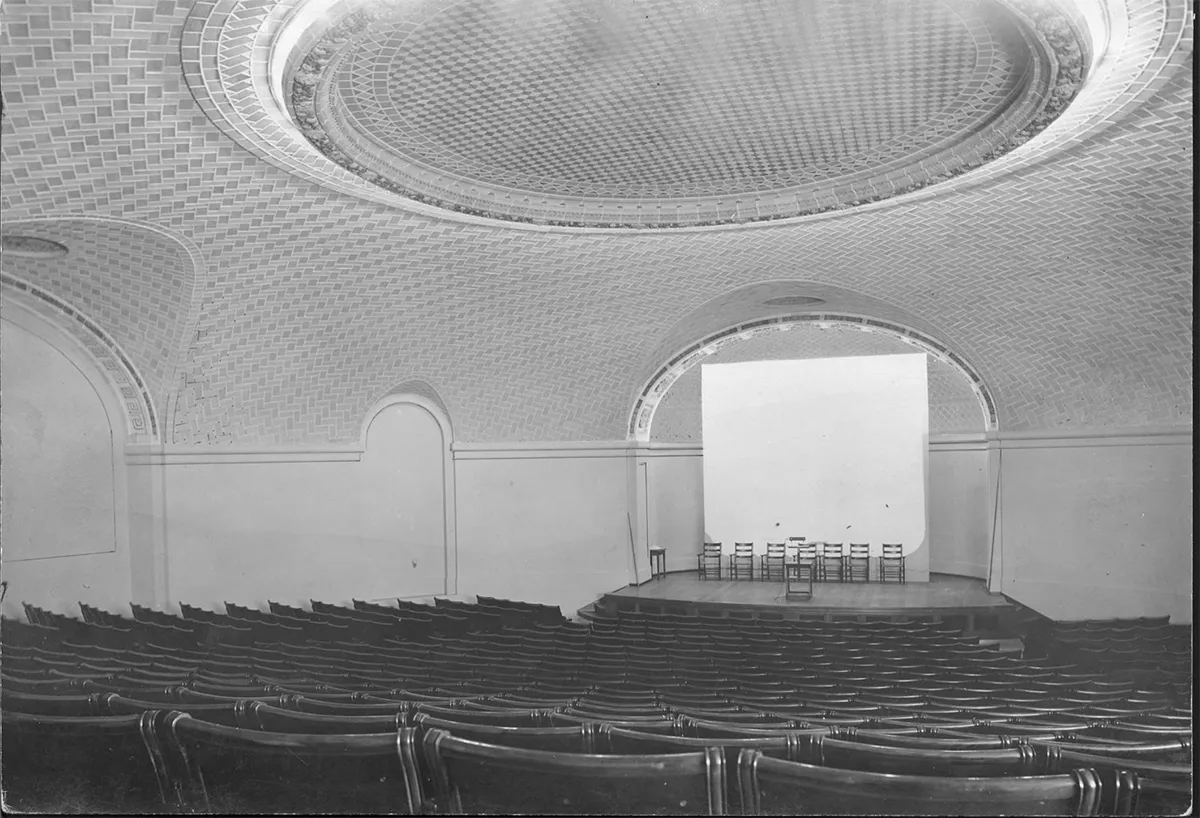
The Great Debate would see the two scientists argue the scale of the Universe and whether ‘spiral nebulae’ (what we now know as spiral galaxies) were small and nearby, or huge and far away.
The Great Debate began on Monday 26 April 1920 at 8.15pm.
One year after the event, Shapley and Curtis presented their conflicting views in the Bulletin of the National Research Council.
In a sense, the Great Debate was thus first published in May 1921, but not many people know that the two articles were strongly expanded versions of the original presentations.
Moreover, it is largely unknown that the debate mainly focused on the dimensions of our Milky Way Galaxy; that neither of the two astronomers believed that spiral nebulae were located inside the Milky Way, and that both were partly right and partly wrong. Therefore, it is time to set the record straight.
Who took part in the Great Debate?
Harlow Shapley (1885–1972)

Shapley was born near Nashville, Missouri, and started out as a local newspaper crime reporter. In 1907, he wanted to study journalism at the University of Missouri, but the course had been postponed, and he chose astronomy instead. He was then hired by George Ellery Hale at Mount Wilson Observatory, and in 1921, he became Harvard College Observatory director, a position he held until he retired in 1952.
Heber Curtis (1872–1942)

Curtis earned an astronomy degree from the University of Virginia and went to Lick Observatory in 1902 to study spiral nebulae with the 36-inch Crossley reflector. In 1920, he was appointed director of the Allegheny Observatory in Pittsburgh; 10 years later, he took the helm of the University of Michigan observatories in Ann Arbor. Curtis was a member of 11 eclipse expeditions between 1900 and 1932.
How did astronomy's Great Debate come about?
A century ago, not much was known about our Universe. The expansion of the Universe hadn’t been discovered yet – although a handful of spiral nebulae had had their uncannily large recession velocities measured.
There was no talk of a Big Bang. Albert Einstein’s new theory of gravity had only just been confirmed by the detection of the bending of starlight by the Sun during a total solar eclipse in May 1919 – but Curtis (himself an avid eclipse chaser) still didn’t believe in general relativity.
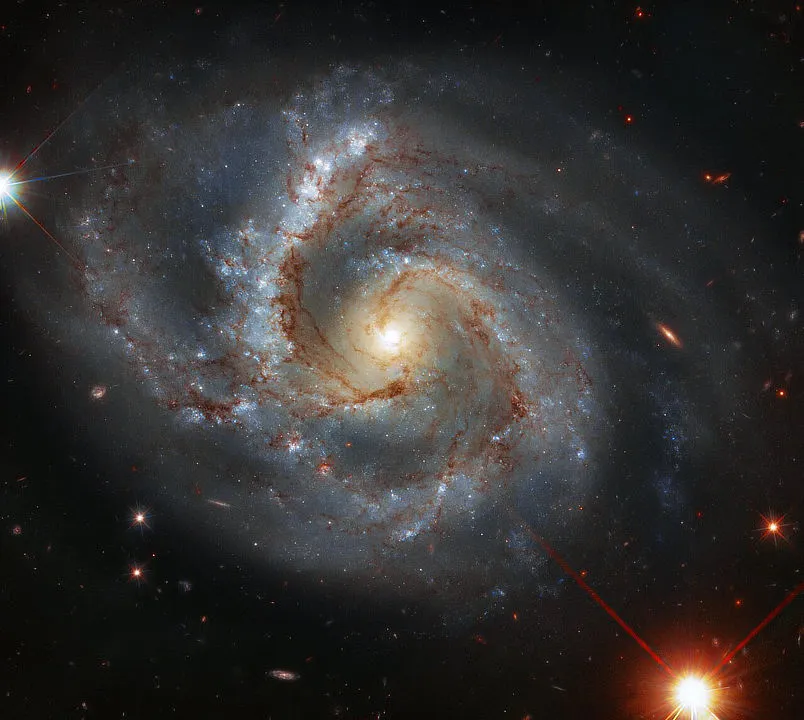
Moreover, no one knew about the size and structure of our Milky Way. These were the very early days of cosmology.
Heber Curtis, who had become director of the Allegheny Observatory in Pittsburgh, Pennsylvania in 1920, was convinced that the Milky Way Galaxy was some 30,000 lightyears across, and that the Sun was located near its centre.
That view was also strongly advocated by his famous Dutch colleague Jacobus Kapteyn, on the basis of meticulous star counts.
And following in the footsteps of 18th-century German philosopher Immanuel Kant, Curtis believed that many nebulae were ‘island universes’ – extremely remote collections of billions of stars, comparable to our home Galaxy.

In contrast, Shapley argued that observations of globular clusters pointed toward a much larger Milky Way diameter of 300,000 lightyears, with the Sun more or less in the outskirts.
If so, he told his Washington audience: "The spiral nebulae can hardly be comparable galactic systems".
Given their small apparent sizes on the sky, they would need to be extremely far away, contradicting a number of observations available at the time.
Then again, Shapley was cautious enough to state that "because of the increasing activity in the nebular field, … it is professionally and scientifically unwise to take any very positive view in the matter just now."
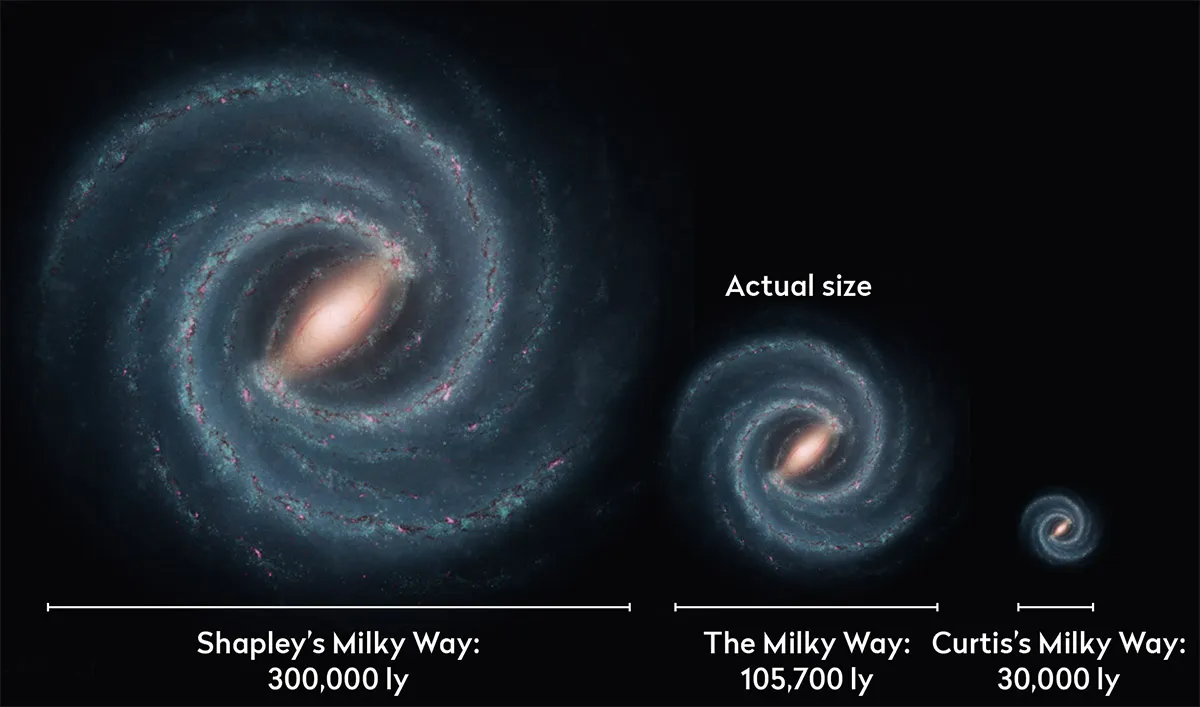
Bringing the two astronomers together in a public debate was the idea of George Ellery Hale, the founder and director of the Mount Wilson Observatory.
Hale talked Charles Abbot, the home secretary of the National Academy of Sciences, into organising the 1920 event.
Both speakers got 40 minutes in turn to describe their views, after which there was time for some discussion, moderated by Princeton astronomer Henry Norris Russell.
Only in their 1921 publications did Shapley and Curtis really respond to each other’s arguments.
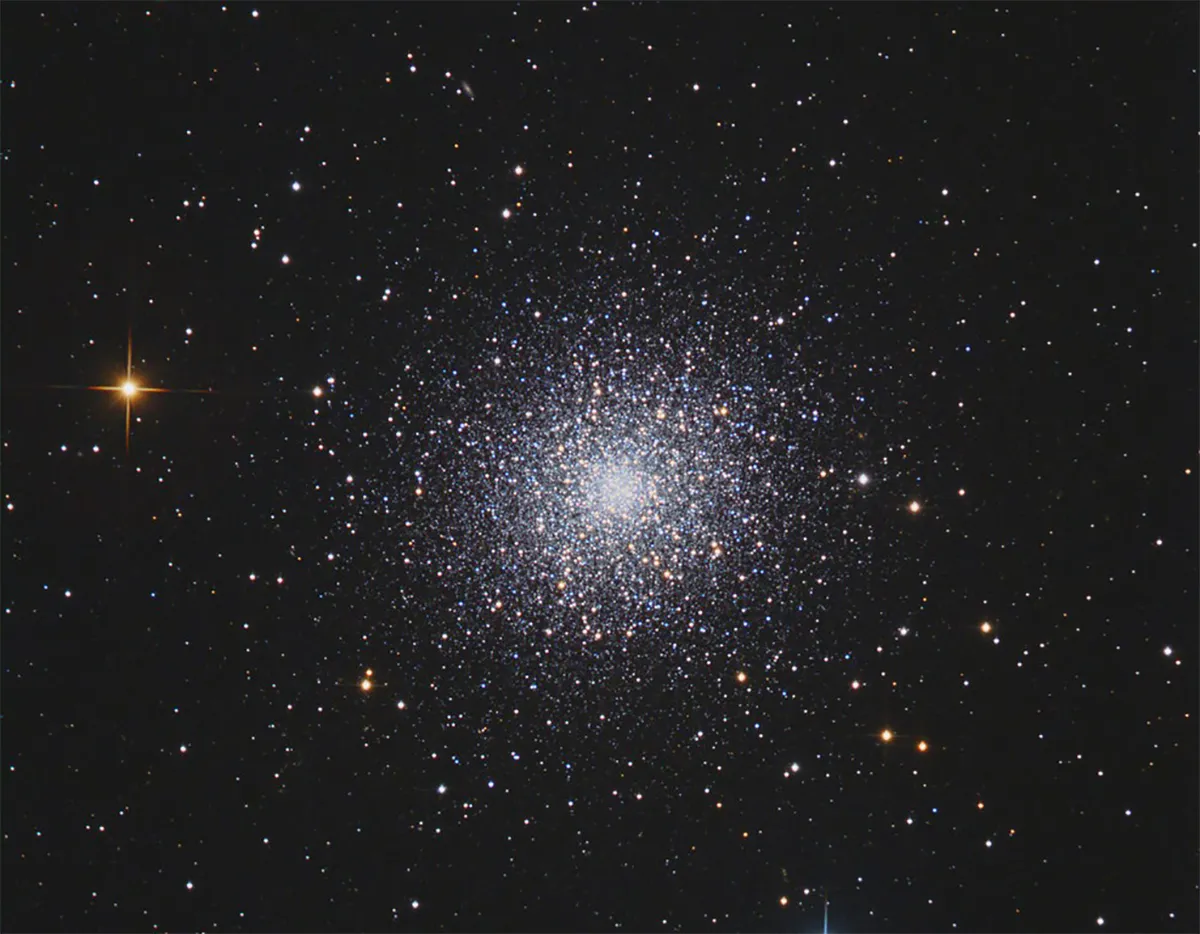
Shapley presented a popular-level account of distance measurements in the Universe, and spent much time on observations of globular clusters, like the Great Globular Cluster, M13, in the constellation of Hercules, the Hero.
Using Cepheid variable stars – which have fluctuating luminosities that are linked to the stars' brightness, allowing astronomers to use them to measure distance in space – he derived that the clusters were up to 200,000 lightyears away.
Given their distribution on the sky, Shapley argued, they definitely belonged to the Milky Way Galaxy, and "There seems to be good reason, therefore, to believe that the star-populated regions of the galactic system extend at least as far as the globular clusters."

Could spiral nebula be distant galaxies?
If spiral nebulae are huge collections of stars comparable to our Milky Way Galaxy, they would need to be tens of millions of lightyears away, and many of the ‘new stars’ (novae) in these nebulae – including the conspicuous one that was seen in the ‘Andromeda Nebula’ (Galaxy) in 1885 – would be much more luminous than typical galactic novae.
Moreover, Shapley’s Mount Wilson colleague and close friend Adriaan van Maanen, who was born in the Netherlands but moved to the US in 1911, had measured rotational motions in at least three spiral nebulae: M33, M81 and M101.
If these nebulae were really huge and remote, they had to rotate much faster than the speed of light for these motions to be discernable at all.

But contrary to what you will read in most accounts of the Great Debate, Shapley did not believe spiral nebulae to be located inside our Milky Way Galaxy.
Relatively nearby, yes, but, as he said, "Not members of our galactic system... I prefer to believe that they are not composed of stars at all but are truly nebulous objects."
The observed novae would be outbursts of stars that were overtaken and engulfed by the nebulae; the high recession velocities would be due to some mysterious repulsive force exerted by the Milky Way.
Curtis, who used typewritten slides to support his much more technical talk, didn’t buy Shapley’s globular cluster arguments, and held on to the decades-old belief of a relatively small, more or less Sun-centered Milky Way.
If the ‘Andromeda Nebula’ was a similar-sized galaxy, it would then be some 500,000 lightyears away – not that unimaginable, although Curtis realised that the faintest ones would have to be at distances on the order of a hundred million lightyears.

In his 1921 paper, Curtis took issue with the idea of galactic repulsion being responsible for high recession velocities ("We know of no force adequate to produce such a repulsion," he wrote).
As for the brightness of stellar outbursts in spiral nebulae – which was less of a problem for him, since he believed galaxies to be 10 times smaller than Shapley’s 300,000 lightyears and therefore closer – Curtis presciently wrote: "A division into two magnitude classes is not impossible."
Indeed, we now know that most of them are supernovae, which are, on average, ten thousand times more luminous than regular novae.
But what about the rotational motions of spiral nebulae measured by van Maanen? Well, Curtis correctly believed them to be erroneous.
"I consider the trustworthy determination of the [rotational] motion […] impossible by present methods without a much longer time interval than is at present available," he wrote, noting that if van Maanen’s observations would be confirmed over "...the next quarter century […], it would seem that the island universe theory must be definitely abandoned."
No one knows what van Maanen did wrong – he was a meticulous observer – but we now know that he can never have detected real proper motions in external galaxies.
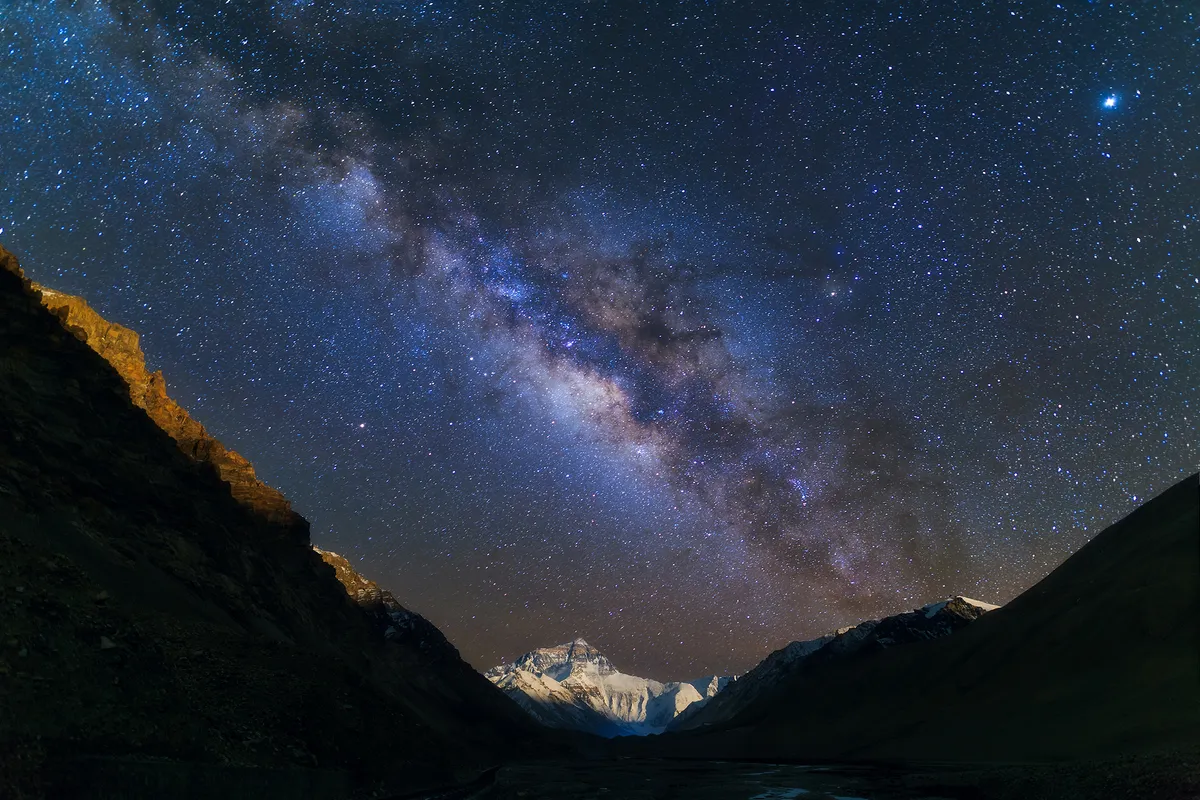
Curtis also explained why spiral nebulae were only found at high galactic latitudes – away from the band of the Milky Way on the sky.
"Many of the edgewise spirals show peripheral rings of occulting matter," he argued.
"If our galaxy, itself a spiral on the island universe theory, possesses such a peripheral ring of occulting matter, this would obliterate the distant spirals in our galactic plane, and would explain the peculiar apparent distribution of the spirals."
Spot on, as we now know.
Ironically, Curtis didn’t realise that 'occulting matter' in our Galaxy is also the reason why we get the impression of living near the centre of a relatively small, disc-like collection of stars.
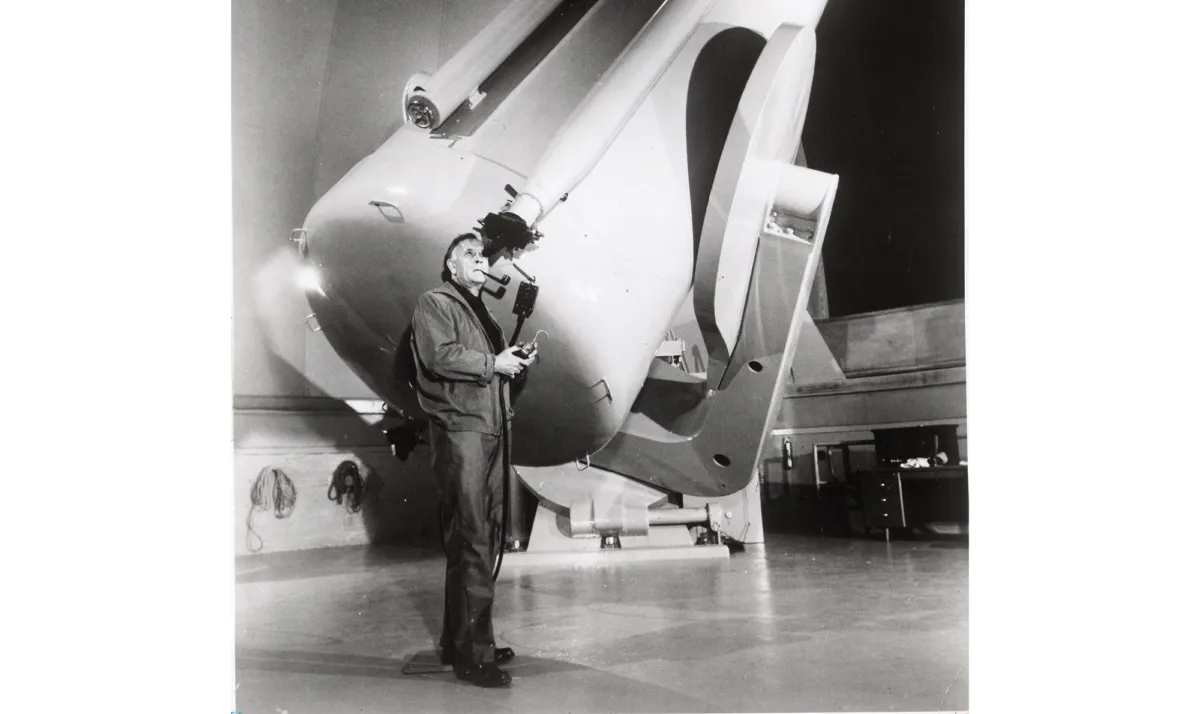
Today, astronomers realise that Shapley’s Milky Way Galaxy was over two and a half times too big, while Curtis’s version was some four times too small and the Andromeda Galaxy is actually 2.5 million lightyears away.
But while Curtis correctly assumed that spiral nebulae were individual galaxies, Shapley was right about the extended three-dimensional distribution of globular clusters and the off-centre position of our Sun in the Milky Way.
As noted astronomy historian Virgina Trimble once said: "Shapley and Curtis each had hold of portions of the correct elephant."
Also, interestingly enough, Shapley didn’t dismiss the existence of external galaxies altogether.
"Even if spirals fail as galactic systems," he wrote in his May 1921 paper, "there may be elsewhere in space stellar systems equal to or greater than ours – as yet unrecognised and possibly quite beyond the power of existing optical devices and preset measuring scales."
Who won the Great Debate?
In 1921, Harlow Shapley still believed spiral nebulae to be swirls of gas in outer space. But not much later, his Mount Wilson colleague Edwin Hubble succeeded in photographing individual stars in the ‘Andromeda Nebula’ (Galaxy), M31.
In October 1923, Hubble even discovered a Cepheid variable star in the nebula’s outer parts. The true luminosity of a Cepheid is related to its period of variability, and it became immediately evident that the Andromeda Galaxy must be located well beyond our Milky Way.
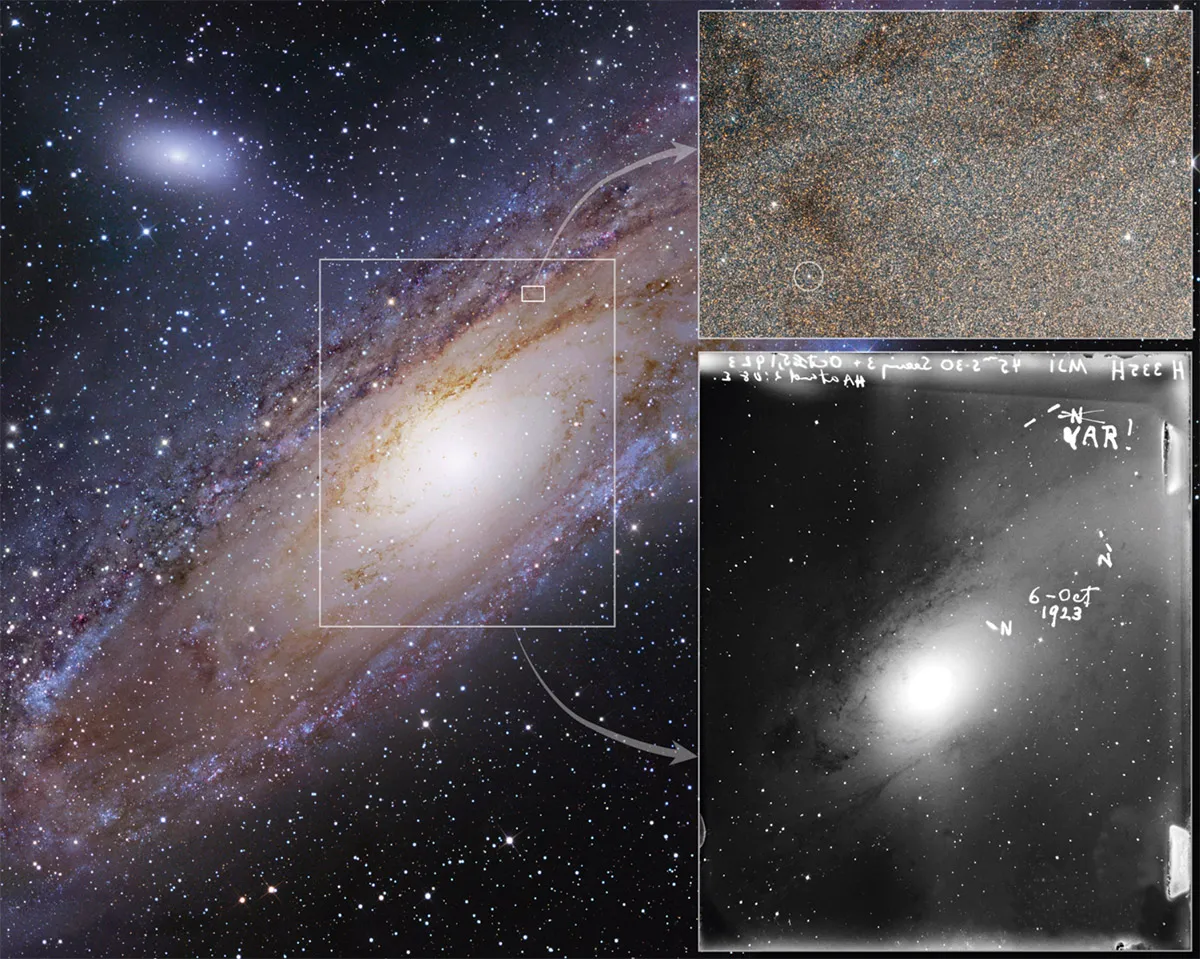
In early 1924, Hubble wrote a letter to Shapley (who had moved to the Harvard College Observatory by then), saying: "You will be interested to hear that I have found a Cepheid variable in the Andromeda Nebula (M31). […] Enclosed is a copy of the light curve, which, rough as it is, shows the Cepheid characteristics in an unmistakable fashion."
According to Cecilia Payne, Harvard’s first PhD student in astronomy, who was in Shapley’s office when the letter arrived, he told her: "Here is the letter that destroyed my universe."
Heber Curtis reacted less dramatically, of course. "I have always held this view [that spirals are separate galaxies], and the recent results by Hubble on variables in spirals seem to make the theory doubly certain."
Edwin Hubble had solved the central issue of the Great Debate once and for all.
Aftermath of the Great Debate
Less than three years later, the issue was settled and the Great Shapley–Curtis Debate became almost forgotten – it wasn’t even mentioned in an obituary of Curtis, written after his death in 1942.
Only in 1960 did National Radio Astronomy Observatory director Otto Struve describe it as "a historic debate", after which the event received ever-more coverage in astronomy history books.
A full one hundred years after the landmark publications, the Great Debate is now a beautiful reminder of the enormous growth of our knowledge over the past century, and a testimony to the value of scientific argument.
Govert Schilling is an astronomy journalist and broadcaster, and author of Ripples in Spacetime. This article originally appeared in the May 2021 issue of BBC Sky at Night Magazine.
